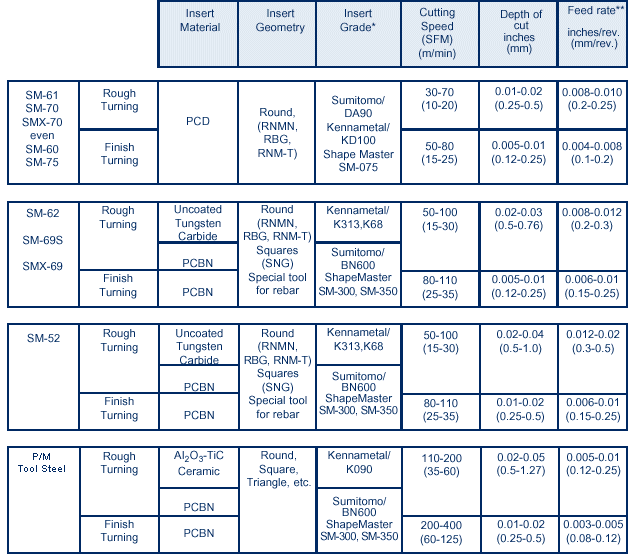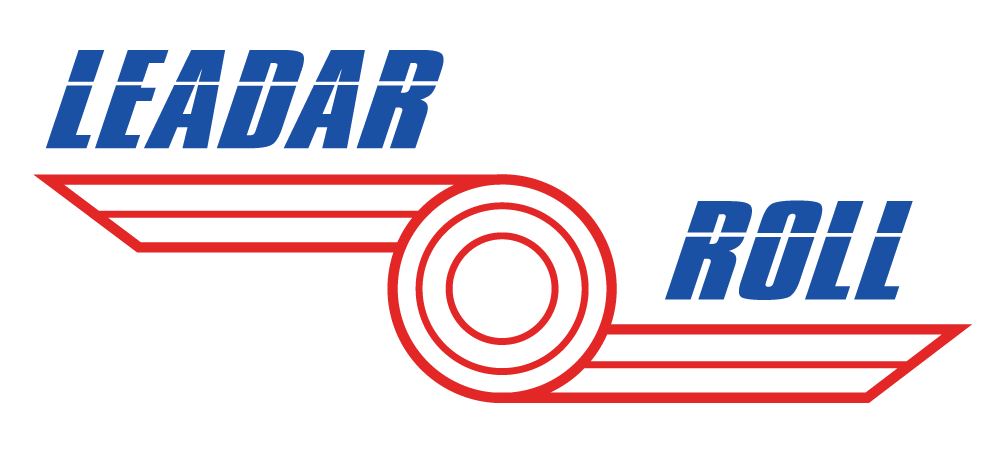Cemented Carbides and P/M Tool Steels such as SVCR-9 are considered hard materials. It is necessary to take special precautions while performing machining operations on such materials. Presented below are important general considerations that must be taken into account to ensure successful and reasonably economical machining. Also presented are specific recommended machining parameters for cemented carbides and SVCR-9.
As stated earlier, cemented carbides and SVCR-9 are hard materials. In general, the cutting tool must be harder than the work-piece materials. Tool materials that can successfully cut cemented carbides and SVCR-9 can be classified as “superhard” materials. Examples of such tool materials include polycrystalline cubic boron nitride (PCBN) and polycrystalline diamond (PCD). In addition, the hardest grades of cemented carbides (e.g., ISO code K01) can be used to cut the softest cemented carbide roll grade, and Al2 O3 -based ceramic can be used to cut SVCR-9.
The high hardness (and relatively high brittleness) of the above cutting tool materials makes them prone to chipping and breakage during operation. This necessitates the observation of the following precautions:
Selection of an insert style that has the maximum strength whenever possible (e.g., round).
Selection of relatively small depths of cut, low feed rates and relatively slow cutting speeds to avoid the excessive build-up of heat (particularly for roughing cuts).
Selection of very rigid machine tools and tool holders to ensure minimum vibration levels.
Chamfered cutting face (width of protective chamfer bf = 0.3-2mm, chamfer angle gf = 6-25°). High bf and gf values are recommended for rough machining. Edge preparations (corner radius r = 0.8-1.6 mm).
Negative insert geometry (rake angle g and backrake angle l = -5 ~ -10°, clearance angle a = 4-8°).
PCBN (high CBN containing grades) for high binder (³ 25 wt% Co/Ni) and PCD (medium-coarse grain) for low binder (20-25 wt% Co/Ni) cemented carbides.
Specific recommended parameters may be employed while machining cemented carbide or SVCR-9 rolls. Since the type and rigidity of the machine tools can vary significantly from mill to mill, it is important to note that the recommendations provided in the attached table serve as guidelines rather than rigid rules. Such guidelines are meant to help in the establishment of “optimum” machining parameters (which may have to be developed through trial and error).

* Other equivalent insert grades can also be applicable
** Cut dry when feasible. If collant is used, it must be on before entering the cut.

